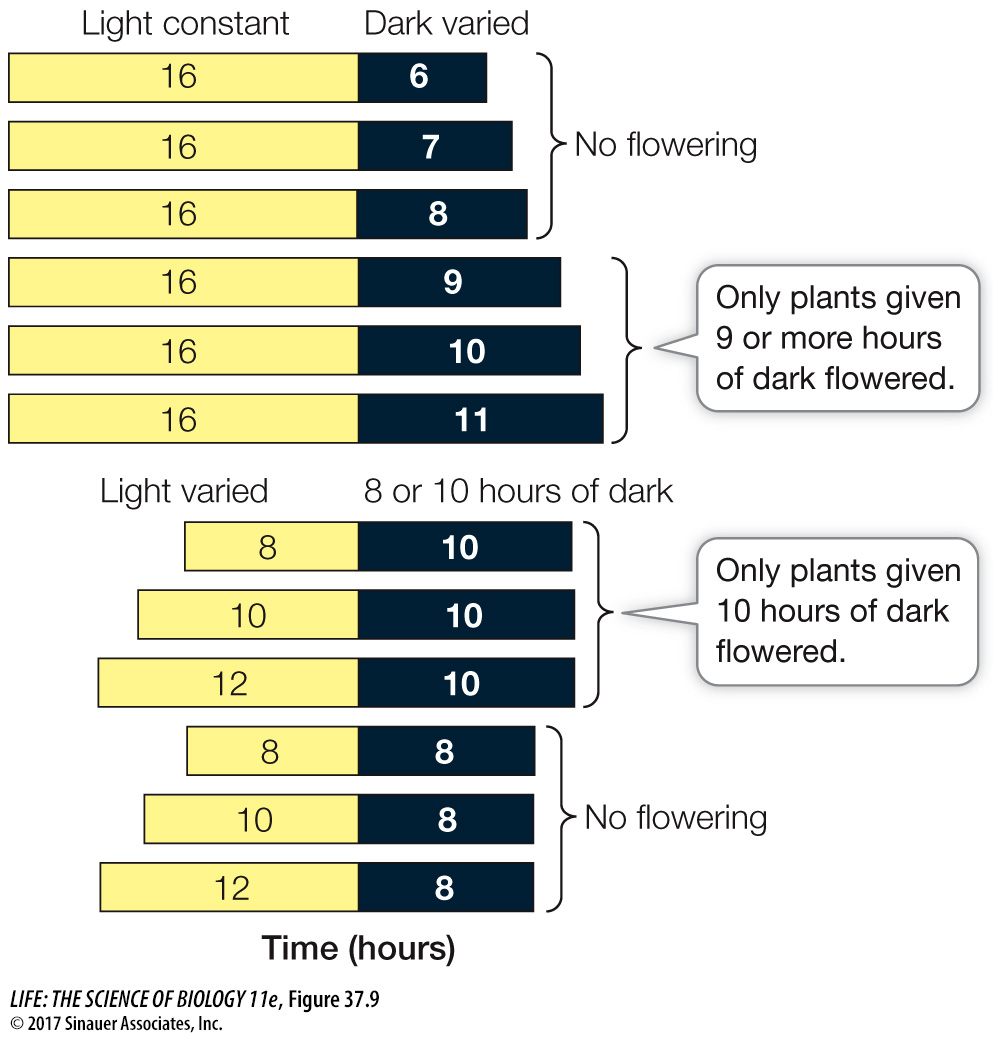Night length is a key photoperiodic cue that determines flowering
The terms “short-day plant” and “long-day plant” imply that day length is the environmental cue that triggers flowering. Actually, the important cue is night length, as a series of greenhouse experiments confirmed (Figure 37.9). In a greenhouse, the overall length of a day or night can be varied, irrespective of the 24-hour natural cycle. For example, if cocklebur, an SDP, is exposed to several long periods of light (16 hours each), it will still flower as long as the dark period between them is 9 hours or longer. This 9-hour inductive dark period also induces flowering even if the light period varies from 8 hours to 12 hours.

Figure 37.9 Night Length and Flowering Greenhouse experiments using cocklebur, a short-day plant, showed that night length, not day length, is the environmental cue that initiates flowering.
Biologists noticed that when the inductive dark period was interrupted by a brief period of light, the flowering signal generated by the long night disappeared. It took several days of long nights for the plant to recover and initiate flowering. Interrupting the day with a dark period had no effect on flowering. A clue as to what occurred in the plant when the flash of light was given came when biologists determined the action spectrum for the wavelengths of light that were effective. As with lettuce seed germination (see Figure 36.12), red light was most effective at breaking the “night” stimulus, and its effect was reversible by far-red light (Investigating Life: The Flowering Signal). Later, the photoreceptor involved was identified as a phytochrome.
As described in Key Concept 36.4, phytochromes and a blue-light receptor function together to “entrain” a circadian rhythm in plants. These photoreceptors cycle through active and inactive phases over repeated 24-hour periods. One gene whose expression follows a circadian rhythm is CONSTANS (CO), which encodes a transcriptional regulator that controls the expression of flowering genes.
Experiments with Arabidopsis, an LDP, have shown that photoperiodic flowering times are determined by interactions between photoreceptors and the CO protein. CO gene expression goes through regular 24-hour cycles with peak expression late in the day. On long days, this occurs in daylight, late in the afternoon, but on short days the peak expression occurs after dark. On long days, the active forms of phytochrome and a blue-light receptor activate pathways that stabilize the CO protein, which promotes flowering. This process does not occur on short days.
Animation 37.2 The Effect of Interrupted Days and Nights
